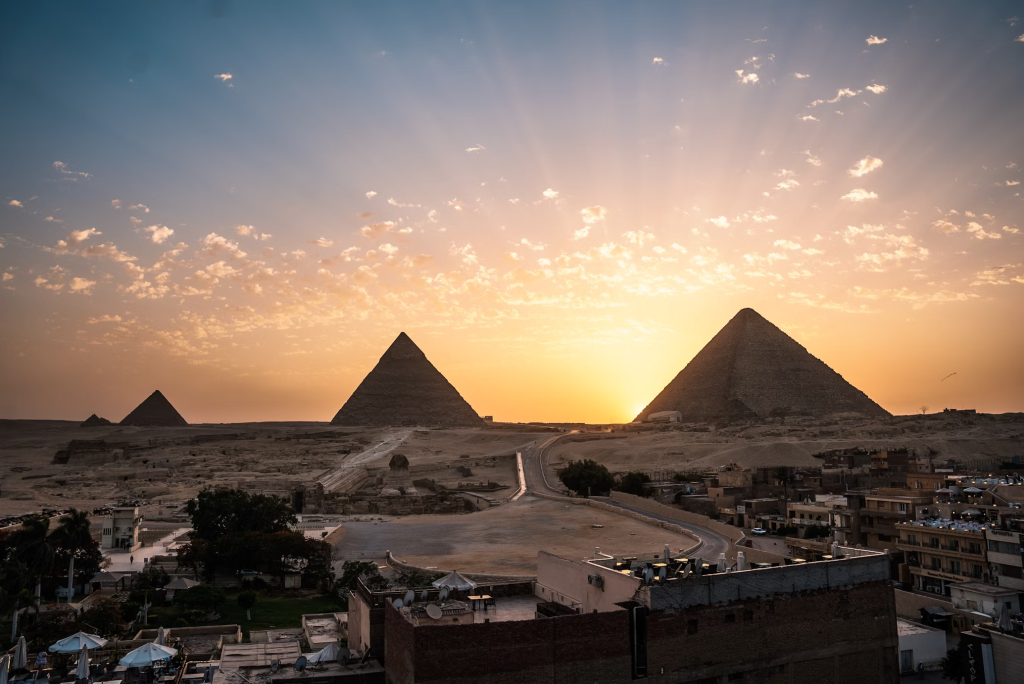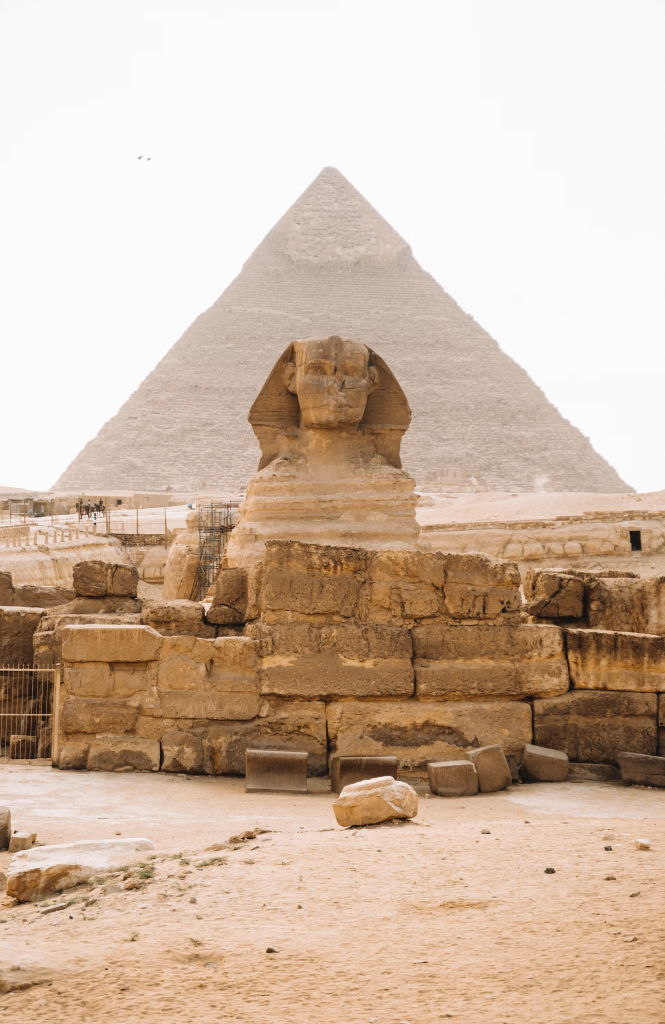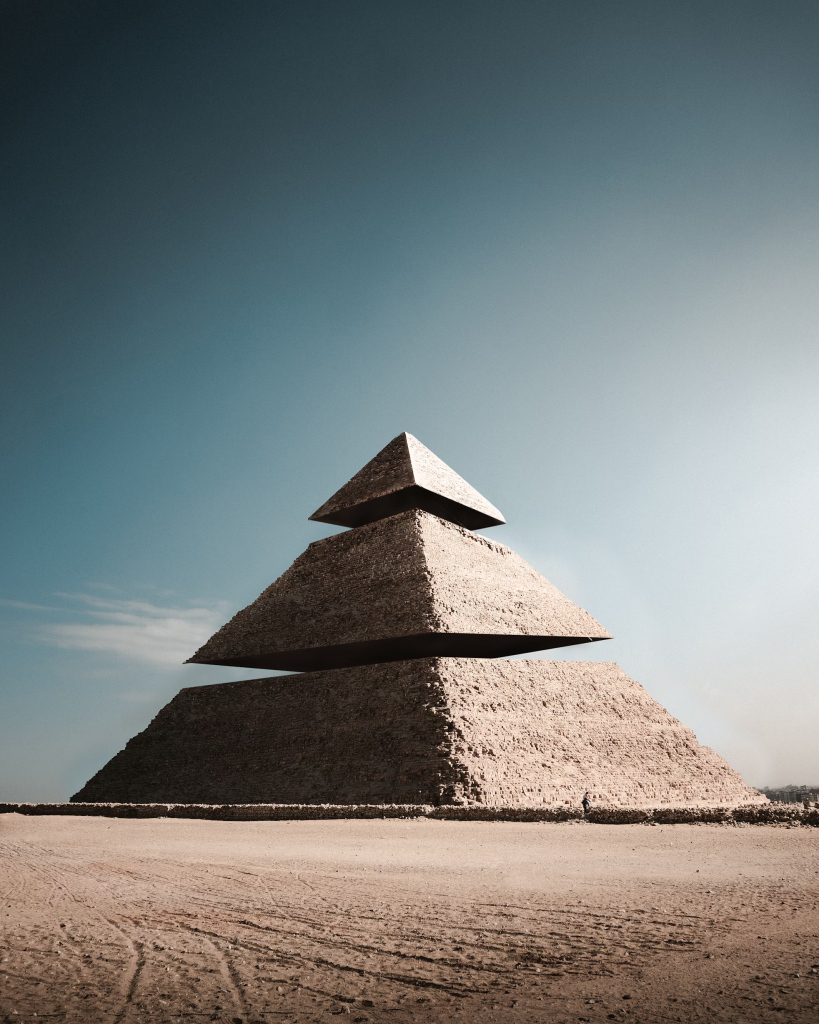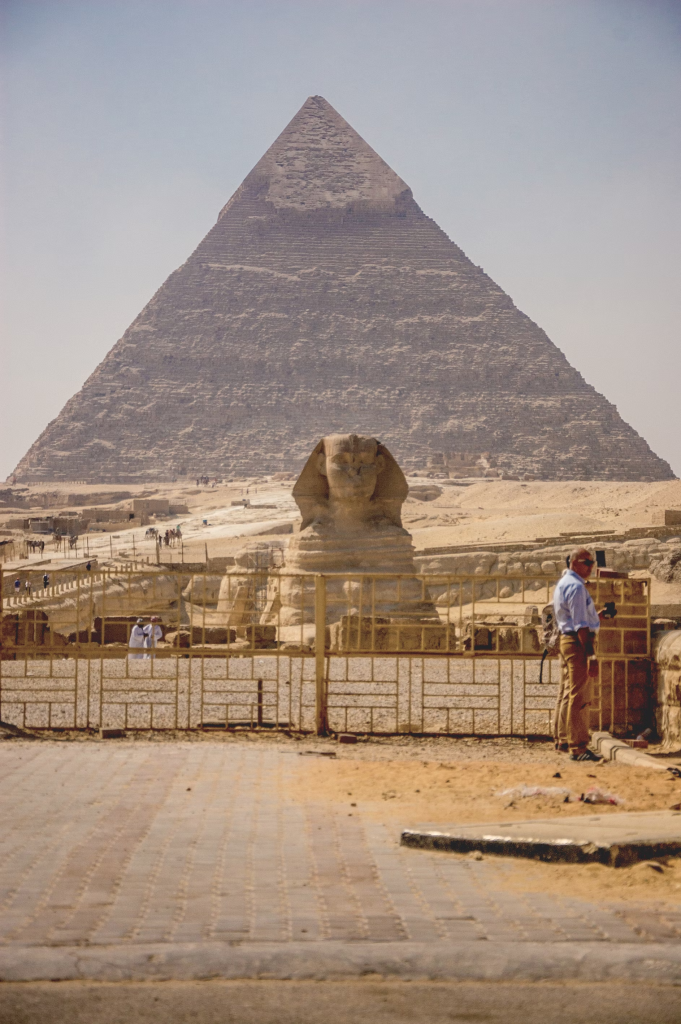
The Great Pyramid of Giza is an everlasting wonder of ancient buildings in Egypt. It still captivates the world with its dimensions and the precision of the construction. It was built over 4500 years ago. However, a dispute has arisen on whether it is an example of ancient engineering mastery or a symbol of pharaonic power. This discussion will examine two aspects of the pyramid. Its architectural brilliance and its import as an emblem for those who govern through divine authority.
Historical Context

Around 2560 BCE, the ancient engineers completed the Great Pyramid of Giza, representing a monumental achievement in engineering. Built during the Fourth Dynasty by King Khufu, it necessitated huge numbers of workers and excellent planning. Pyramids were very important in ancient Egypt because they served as royal tombs and represented the divine power of pharaohs. People saw them as symbols of the pharaohs’ eternal power and divine favour, believing they helped the pharaohs transition to the afterlife. The building of the Great Pyramid was practical. It was also a spiritual and political act. This act showed the ruler’s closeness to God or gods. It demonstrated his control over people and land.
Architectural Marvel

Among ancient structures in Egypt, there is an extraordinary architectural marvel called the Great Pyramid of Giza. Its base measures more than 13 acres and is made up of about 2.3 million limestone blocks, each weighing several tons. It is just unbelievable that these colossal stones were carved and placed with gaps as small as a few millimetres wide. There also exist contrasting opinions among scholars on how they were transported by means of wooden sledges, ramps or levers.
Comparing it with other ancient monuments; the size and complexity of this Great Pyramid become exceptional. Other impressive monuments, in Egypt, are also formations by Mesopotamians and Mayans – still, none can match the Egyptian Great Pyramid’s size and accuracy. Even if we had all modern machines at our disposal today, constructing another such monstrous edifice would be no mean task. And so have stood as a testament to human achievements in architecture since time immemorial
Symbol of Power

Embodied in the great pyramid of Giza, Egypt’s iconic structure is a lasting testament to the strength and authority of its pharaohs. The pyramid was not only a remarkable architecture but also a powerful emblem of eminence and connection between gods and pharaohs. Its imposing visage at the plateau of Giza confirmed power over land and people and represented their divine right to rule. Additionally, the construction of this pyramid likely called for huge numbers of labourers including skilled artisans, small-scale farmers, and unskilled workers. These employees spent enormous amounts of time under their king’s guidance to construct this gigantic thing thus underscoring the ruler’s resourcefulness and ability to command obedience.
Modern Interpretations

Even today, the Great Pyramid of Giza continues to captivate scholars and fans alike, leading to various thoughts on its purpose. Some believe it could have been the final resting place for Pharaoh Khufu, while others argue it held an astronomical or religious significance. Conspiracy theories also suggest that aliens built the pyramid or that hidden compartments exist inside them. Still, these conjectures, this pyramid has remained an attraction for both tourists and cultural enthusiasts from all walks of life who come from all parts of the globe since very many years ago. Its imposing form attracts millions of visitors yearly due to its enigma and historical value. The desert backdrop often includes Egypt’s famous pyramids, symbolising a nation with a long history dating back centuries before Christ. This makes it not only a mere relic but also a symbol reflecting lasting national identity and pride among Egyptian people
Construction Techniques

The construction of the Great Pyramid of Giza is a clear example of the architectural sophistication of the old times. Cut stones are notable among them. Workers quarried and trimmed these heavy limestone blocks with amazing accuracy, making them capable of fitting each other. The skill level is such that it is hard to see even the joints between the different stones.
Additionally, another astonishing fact about this pyramid is its perfect alignment with cardinal points. Although a large structure, the builders oriented the Great Pyramid with north, south, east, and west compass points. The ancient Egyptians demonstrated their math and astronomy skills. They used planning and observations.
Construction methods for the Great Pyramid still amaze people today.
Religious Significance

Ancient Egyptians associated the Great Pyramid of Giza with deep religious and spiritual meanings. The core idea of it is that the pharaoh was a divine being and that there was life after death. Egyptians believed the pyramid was an entrance into the next world thus they constructed it as a colossal tomb for their king to meet immortality. The colossal pyramid represented the ascent of pharaohs towards the heavens, where they were to join gods in eternal glory.
Moreover, ancient Egyptians expressed their cosmological ideas through the pyramid’s construction. These angles represented sunlight beams that atmospheric clouds filtered. Thus, embodying Pharoah’s connection with Ra (the Sun god), whom Egyptians worshipped throughout Egypt. Also, its positioning along cardinal points had a symbolic sense which incorporated him/her into a cosmic order by which any Egyptian ruler abided.
The Greater Pyramid of Giza served not only as a great testament to might but also as a sacred emblem of spiritual progressiveness on the whole. Ancient Egyptians showed deep respect for divinity through religious symbolism in the design and construction. This reflected their belief in an afterlife.
Explore More Destinations in the Country with PackUpYourBags!
The Great Pyramid of Giza is the most outstanding example of human intelligence. It is also of cultural importance as the highest point in ancient Egypt. Egypt’s mystery influences literature, cinema, art, and pop culture. It defines the rich heritage. It has continued to be an obsession with past greatness and achievement, continuing to stun and awe people. The pyramid symbolizes humanity’s potential for greatness. We find Ancient Egypt fascinating. This human marvel invites us to go deep into the waters of enlightenment. Explore more similar destinations in Egypt with PackUpYourBags.

